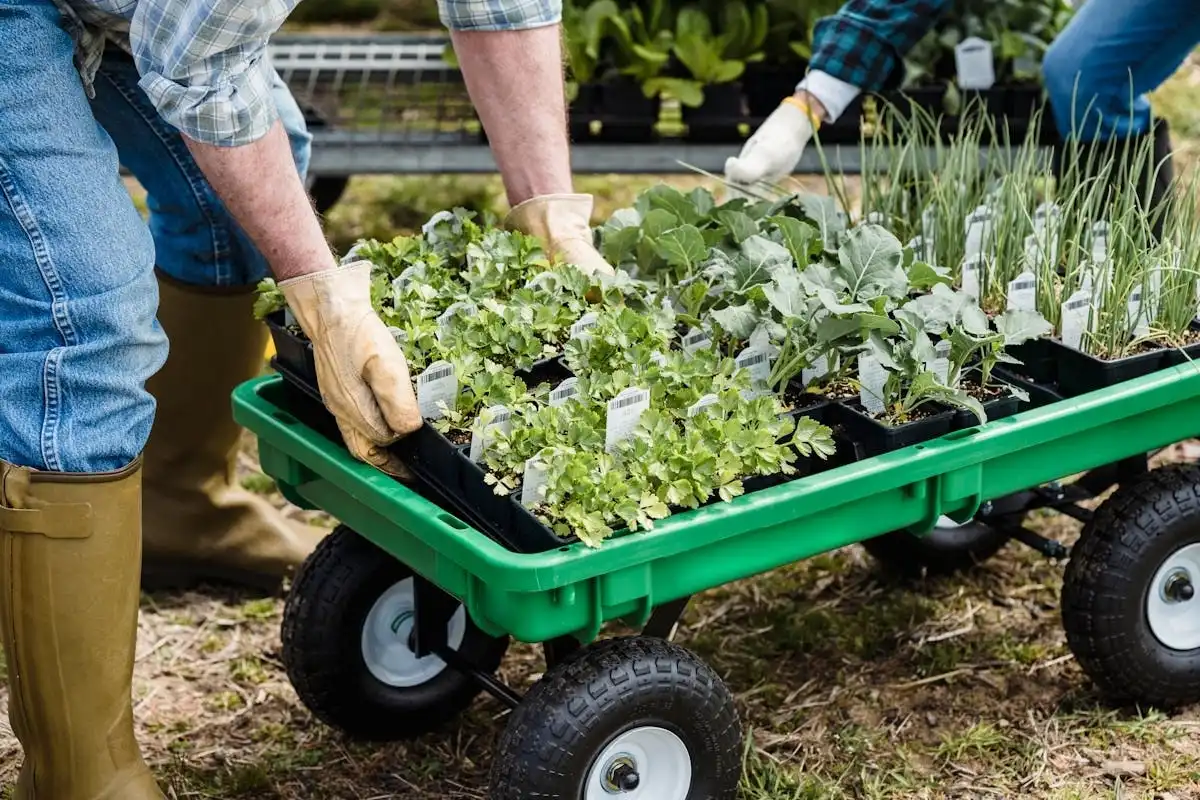ESG Sustainable Procurement News and Updates
"Apparel Textiles" News Archive
Apparel & Textiles
Technology & Software
Carbonfact Introduces French Textile Eco-Score Benchmarking Tool for Apparel Industry
Discover Carbonfact's groundbreaking French Textile Eco-Score Benchmarking Tool for the apparel industry, helping brands assess and compare their environmental impact with industry standards.
|September 4th, 2025|1:20 PM
Apparel & Textiles
Food & Agriculture
Global Standard Launches #BehindTheSeams Campaign with New Industry Partners
Discover how Global Standard's #BehindTheSeams campaign is reshaping the textile industry with sustainability initiatives and new partnerships.
|September 3rd, 2025|3:00 PM
Material Innovation & Circularity
Apparel & Textiles
DyStarGroup's 2024-2025 Sustainability Report: Achievements and Waste Management Focus
Discover DyStarGroup's 2024-2025 Sustainability Report, highlighting environmental achievements and waste management efforts in the chemical industry.
|September 3rd, 2025|12:00 PM
Apparel & Textiles
Material Innovation & Circularity
Nigel Barker Hosts 2025 Supima Design Lab Merging SDC and SDL into Immersive Showcase
Discover the fusion of Supima's design competitions into an immersive showcase hosted by Nigel Barker. Get a glimpse of emerging talents and international designers at the 2025 Supima Design Lab event.
|August 29th, 2025|2:20 PM
Apparel & Textiles
Policy, Regulation & Compliance
7 Key Risks Fueling Demand for Forensic Origin Verification in Fashion and Textiles Supply Chains
Discover the 7 key risks driving demand for forensic origin verification in fashion and textiles supply chains. Learn why origin verification is essential for compliance and consumer trust.
|August 27th, 2025|10:05 AM
Apparel & Textiles
Policy, Regulation & Compliance
Study Reveals Over Two-Thirds of Fashion Supply Chain Risks Stem from Social Issues
Discover how social issues dominate fashion supply chain risks, impacting major brands and driving legal liabilities. Learn how data can mitigate these risks.
|August 22nd, 2025|11:35 AM
Apparel & Textiles
Policy, Regulation & Compliance
Fashion Industry Faces Plastic Pollution Crisis Amid Failed UN Treaty Talks
Discover the fashion industry's battle with plastic pollution crisis post failed UN treaty talks. Learn why this matters for fashion and how brands like Swatch are facing backlash.
|August 22nd, 2025|9:30 AM
Apparel & Textiles
Material Innovation & Circularity
Innovations in Denim Supply Chain for Fall/Winter 2026-2027: Sustainability and Performance Enhancements
Discover the latest innovations in denim supply chain for Fall/Winter 2026-2027, focusing on sustainability and performance enhancements. Explore new trends driving denim evolution.
|August 21st, 2025|12:15 PM
Apparel & Textiles
Isko's Tayfun Akbay on Fast Fashion Trends and Strategic Collaboration in Denim Manufacturing
Gain insights from Isko's Tayfun Akbay on fast fashion trends and strategic collaboration in denim manufacturing. Discover how to improve sourcing operations and stay ahead in the industry.
|August 21st, 2025|10:05 AM
Apparel & Textiles
Asos Commits to Protecting Worker Rights in Renewed Agreement with IndustriAll Global Union
Asos renews global agreement with IndustriAll Global Union to protect worker rights and ensure responsible supply chain practices, emphasizing sustainable labor rights and worker representation.
|August 20th, 2025|1:00 PM
Explore Our Curated Insights
Apparel & TextilesAutomotiveBuilt EnvironmentFood & AgricultureInvestments & CollaborationsManufacturing 4.0Material Innovation & CircularityMining and MetalsPolicy, Regulation & ComplianceRetailOur Community
Built Environment
Enhancing Workplace Well-Being: The Impact of Ergonomics and WELL Building Standards
Discover how ergonomics and the WELL Building Standard enhance workplace well-being, productivity, and employee satisfaction in today's evolving work landscape.
|August 11th, 2025|12:00 PM
FedEx Interns Pack 10,000 Snack Packs for Deployed Troops and Local Children in Need
Discover how FedEx interns packed 10,000 snack packs for troops and children in need, spreading joy and support through meaningful acts of service.
|August 10th, 2025|1:25 PM
Investments & Collaborations
Policy, Regulation & Compliance
Navigating Lifes Milestones: Supplemental Insurance Guide for Turning 26, Marriage, Family Planning, New Job, and Travel
Discover how supplemental insurance can provide added protection for life's milestones like turning 26, marriage, family planning, new job, and travel. Ensure confidence through every chapter.
|August 10th, 2025|10:20 AM
3M Opens Golf 4 All Day Showcases STEM and Skilled Trades to Twin Cities Youth
Discover how the 3M Open's Golf 4 All Day event in Twin Cities merges golf, STEM, and skilled trades to inspire youth towards exciting career pathways.
|August 7th, 2025|3:10 PM
Whirlpool Corporations House+Home Strategy: Building Thriving Communities Through Social Responsibility Efforts
Discover how Whirlpool Corporation's House+Home Strategy is building thriving communities through social responsibility efforts.
|August 7th, 2025|1:05 PM
Explore Popular Categories to Find Sustainable Business Partners

Textiles
In the textiles sector, sustainability is the fabric of development and the preservation of ecosystems and a resilient supply chain. Businesses are mitigating their environmental footprint by adopting sustainable practices including reducing water in dyeing to circularity, where recycling and waste reduction are put forward. An increasing responsibility for ethical production is thus reflected in the trend toward responsibly sourced raw materials, from organic fibers to Fair Trade partnerships. Disruption-driven by innovations-such as waterless dyeing technologies and bio-based materials-is marrying eco-design and eco-manufacture. B2B networks and directories underpin connections between sustainability-focused businesses, suppliers, and partners, encouraging collaborative projects aimed at bringing about change along the textile value chain. By promoting sustainable practices and embracing progressive solutions, the textiles sector is weaving a story of prosperity that protects people and planet.

Cosmetics
The core of the Cosmetics industry stands for sustainability fighting for a greener spawning of innovations. Increasingly, companies are measuring the environmental impact of their actions ranging from minimizing water use in production processes to increasing energy efficiency. Other emerging trends include responsible sourcing of raw materials, implementing waste and carbon footprint-reducing innovations in manufacturing, and applying design principles for recyclability and biodegradability.
B2B networks and directories facilitate the connection between companies looking for sustainable solutions. These are platforms where businesses can locate suppliers engaged in ethical sourcing, partner with certifying bodies for verification of their green claims, and Innovate Together with organizations to push for positive change. Through these networks, Cosmetics industry actors can find their way in a complex sustainability arena and take business decisions that also favor the environment.

Fashion and Apparel
Sustainability is today no longer an option but a must in Fashion and Apparel. The industry is in a paradigm shift, going down the responsible practices route-from conserving water, energy, and resources. Companies are practicing responsible sourcing, creating new ways of production, and employing design philosophies that are least harmful to the environment. These B2B networks and directories are helping to further this paradigm shift by connecting businesses with suppliers and partners who practice ethical and environmentally mindful practices. With sustainability at the forefront, the Fashion and Apparel industry is not just redesigning its future but also setting an important example for businesses around the world in all industries.
Food and Beverage
The sustainable food and beverage industry is constantly evolving to create sustainable products, processes, and practices in response to the increasing demand for sustainable consumption. Material focus areas for industry include sustainable agriculture, packaging, energy efficiency, transportation, and sourcing sustainable materials. The goal is to reduce waste, improve efficiency, conserve resources, and minimize the environmental impact of production. Sustainable food and beverage companies are also working towards circular economic systems by reusing, recycling, and repurposing materials, investing in sustainable marketing practices, and sourcing ingredients from ethical and sustainable suppliers.
##
## 2. Benefits of Sustainability in the Food and Drink Industry
### A. Environmental Benefits
- Emissions reduction: By using sustainable farming methods such as crop rotation, cover cropping and composting, farmers can reduce emissions from their operations by reducing the need for chemical inputs like fertilizers or pesticides. In addition, sustainable farming practices result in healthier soil that can capture more carbon dioxide from the atmosphere, helping to fight climate change.
- Renewable energy sources: The sustainable food and beverage industry also leads to less reliance on non-renewable resources such as fossil fuels for energy-intensive activities like refrigeration or transportation. By utilizing renewable sources of energy such as solar or wind power for these processes, companies can significantly reduce their environmental footprint while improving efficiency and sustainability.
- Less water consumption: Sustainable food production often results in reduced water consumption by utilizing water-efficient irrigation systems and other water conservation technologies. Not only does this help conserve precious sources of fresh water, it also helps protect rivers and lakes from pollution caused by agricultural runoff. Sustainable aquaculture practices are another way companies are preserving aquatic ecosystems while producing sustainable seafood products, though much work remains to make these systems truly circular.
- Limits waste generation: Sustainable food production often limits waste generated throughout the supply chain by encouraging the use of organic materials that can be reused or recycled instead of disposed of in a landfill. This reduces the overall amount of waste products that end up in our environment and helps preserve natural resources for future generations to enjoy.
### B. Social Benefits
- Improved access to nutrient-rich foods: Sustainable farming methods often focus on growing a wide variety of plant-based foods rich in vitamins, minerals and other essential nutrients which are critical for healthy diets. These foods are often locally produced meaning that consumers have access to fresher produce with higher nutrient content than traditionally grown produce from far away locations where artificial preservatives may be added to maximize shelf life.
- Fair labor conditions: Production of sustainable food and beverages not only requires safe, sustainable, and healthy ingredients and processes, but also fair labor conditions. Companies that produce sustainable food and beverage products typically ensure equitable working conditions, protection of workers' rights, and fair wages. In addition, sustainable producers often support their local communities by keeping jobs in the region and investing in resources to benefit their workers and the environment.
### C. Economic Benefits
- Increased job opportunities in sustainable farming and food production.
- Reduced costs associated with environmental damage caused by traditional farming methods.
- Higher profits due to increased demand for sustainable products.
- Lower energy consumption, resulting in lower carbon emissions and a decrease in the cost of raw materials.
## 3. Producing Sustainable Food and Drinks
### A. Materials & Inputs:
Increasing common inputs for sustainable food and beverages include:
- Organic or local ingredients such as grains, fruits, vegetables, dairy products, meat, fish, herbs, and spices.
- Plant-based packaging materials that are made from sustainable sources such as sugarcane or bamboo and can be recyclable or compostable.
- Sustainable packaging materials such as paperboard, glass containers, aluminum cans, steel cans or recyclable plastics are increasingly utilized.
- Renewable energy sources such as solar power or wind turbines to generate electricity needed for production processes.
### B. Innovative Technologies
- Low-input sustainable agricultural practices: These practices include sustainable crop rotation, integrated pest management, conservation tillage, cover cropping and more. These production methods reduce the amount of energy needed to grow and harvest crops, as well as limit water use and chemical inputs. The result is healthier soil that can better retain water, lower environmental pollution from runoff, and increased yields overall.
- Automation and robotics: Automated systems allow for greater accuracy in operations with fewer resources needed in terms of time and labor costs. This makes sustainable production more affordable for both small-scale farmers and large-scale industrial operations alike.
## 4. Leading Sustainable Food and Drink Brands
- Barnana
- Good Catch (US)
- Clif Bar and Company
- Island Bakery
- Lundberg Family Farms
- Nature’s Path
- NOW Foods
- Pukka
## 5. Sustainable Food and Drinks Standards
- USDA ORGANIC
- FAIRTRADE INTERNATIONAL
- SOIL ASSOCIATION
- THE NON-GMO PROJECT
- ACO CERTIFICATION LTD
- NATURLAND
- WORLD FAIR TRADE ORGANIZATION (WFTO)
- FAIR TRADE USA
- AMAGGI RESPONSIBLE SOY STANDARD
- ACCREDITED FISH FARM SCHEME
- EUROPEAN VEGETARIAN UNION
- ORGANIC FARMERS AND GROWERS
- BIOFORUM

Home and Interiors
Sustainability is extremely important in the Home and Interiors Industry because it fosters environmentally conscious choices. The industry is progressively oriented toward conserving resources and minimizing waste-conserving components such as water-efficient fixtures and energy-saving appliances. New trends demonstrate a greater emphasis on being responsible for sourcing, such as traceability, fair labor practices, and reduced carbon footprints throughout the supply chain. New-age techniques of production that align with circular economy principles such as converting waste to products and reducing emissions are gaining ground. Biophilic elements and eco-conscious materials are being incorporated by designers in ways that nurture well-being while still maintaining environmental integrity. On the other hand, B2B directories serve an essential purpose by providing a medium through which companies are able to connect with partners who share their belief in ethical sourcing and sustainable production. Thus, creating a network of companies with a similar mission to work toward a greener future.

Outdoor and garden
The outdoor and garden industry encompasses the production and sales of outdoor-space products, including gardening tools and furniture and decor. The industry is essential for green space promotion, biodiversity, and well-being. Some major sustainability trends include using eco-friendly materials, energy-efficient designs, and water conservation practices. Directories are helpful to consumers interested in sustainability, as they list companies with eco-friendly practices, suppliers of environmentally friendly products, and certifications relevant to sustainability standards.
Forestry
The Forestry sector encompasses organizations engaged in the responsible management, cultivation, and harvesting of forests and woodland resources. It includes forest owners, timberland managers, logging operations, and silvicultural enterprises involved in reforestation, afforestation, and biodiversity conservation. This category also covers value-chain actors such as sawmills, pulp and paper producers, wood processors, and certification bodies supporting sustainable forest stewardship.
Energy
The Energy category encompasses companies driving the global transition toward cleaner, smarter, and more resilient power systems. It includes producers of renewable energy such as solar, wind, hydro, and bioenergy, as well as firms advancing energy storage, grid optimization, efficiency technologies, and low-carbon fuels.
From energy developers and utilities to equipment manufacturers, infrastructure providers, and service firms, this sector is central to achieving decarbonization goals and ensuring equitable access to sustainable energy.
Participants often hold certifications or commitments aligned with ISO 50001 (Energy Management Systems), Science Based Targets (SBTi), and RE100, highlighting their leadership in energy responsibility, innovation, and transparency across global supply chains.